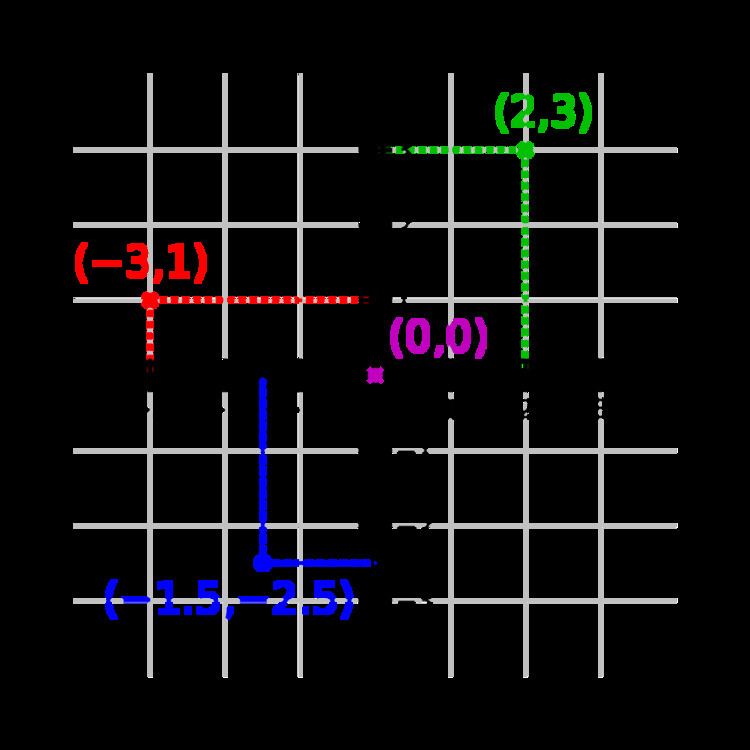 | ||
In mathematics, an abscissa (/æbˈsɪs.ə/; plural abscissae or abscissæ or abscissas) is the number whose absolute value (modulus) is the perpendicular distance of a point from the vertical axis. Usually this is the horizontal coordinate of a point in a two-dimensional rectangular Cartesian coordinate system. The term can also refer to the horizontal axis (typically x-axis) of a two-dimensional graph (because that axis is used to define and measure the horizontal coordinates of points in the space). An ordered pair consists of two terms—the abscissa (horizontal, usually x) and the ordinate (vertical, usually y)—which define the location of a point in two-dimensional rectangular space.
Contents
Etymology
Though the word "abscissa" (Latin; "linea abscissa", "a line cut off") has been used at least since De Practica Geometrie published in 1220 by Fibonacci (Leonardo of Pisa), its use in its modern sense may be due to Venetian mathematician Stefano degli Angeli in his work Miscellaneum Hyperbolicum, et Parabolicum of 1659.
In his 1892 work Vorlesungen über Geschichte der Mathematik, Volume 2, ("Lectures on history of mathematics") German historian of mathematics Moritz Cantor writes
"Wir kennen keine ältere Benutzung des Wortes Abssisse in lateinischen Originalschriften [than degli Angeli's]. Vielleicht kommt das Wort in Übersetzungen der Apollonischen Kegelschnitte vor, wo Buch I Satz 20 von ἀποτεμνομέναις die Rede ist, wofür es kaum ein entsprechenderes lateinisches Wort als abscissa geben möchte." "We know no earlier use of the word abscissa in Latin originals [than degli Angeli's]. Maybe the word descends from translations of the Apollonian conics, where in Book I, Chapter 20 there appears ἀποτεμνομέναις, for which there would hardly be as an appropriate Latin word as abscissa."In parametric equations
In a somewhat obsolete variant usage, the abscissa of a point may also refer to any number that describes the point's location along some path, e.g. the parameter of a parametric equation. Used in this way, the abscissa can be thought of as a coordinate-geometry analog to the independent variable in a mathematical model or experiment (with any ordinates filling a role analogous to dependent variables).
